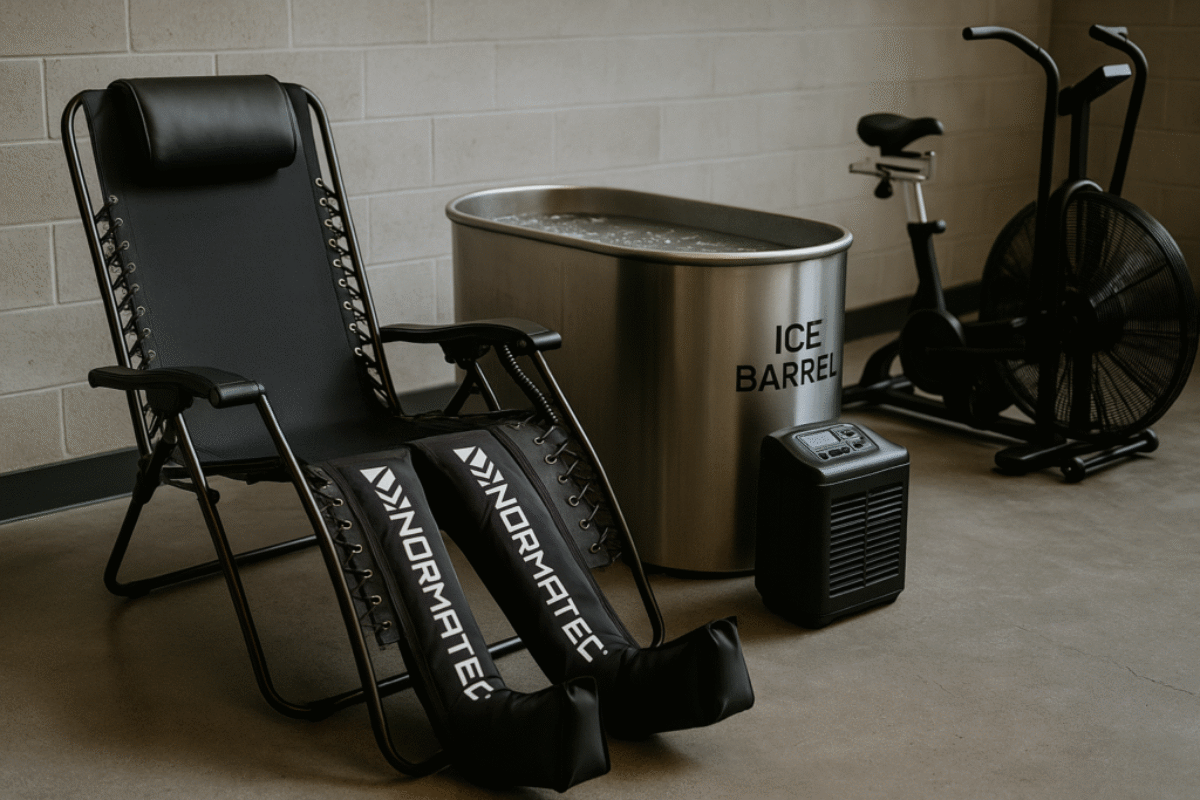Optimize Your Exercise Recovery: Science-Backed Strategies for Faster Results
What if everything you knew about muscle recovery was wrong? Dr. Andy Galpin, a world-renowned performance expert, shatters common fitness myths in his revelatory discussion with neuroscientist Andrew Huberman. Whether you’re an elite athlete or a weekend warrior struggling with soreness, fatigue, or stalled gains, your issue may not be training—it may be poor exercise recovery strategies.
By the end of this article, you’ll master science-backed exercise recovery strategies that accelerate healing, prevent overtraining, and unlock your full performance potential.
Why Science-Backed Exercise Recovery Is Crucial for Performance Gains
Exercise recovery is the biological process your body uses to repair and rebuild after physical stress. It’s when the actual progress happens, not during the workout. As Dr. Galpin explains:
“Workouts trigger adaptation, but the actual progress happens during recovery—not during the workout itself.”
This mirrors neuroplasticity in the brain: stimulation creates the potential for change, but the transformation occurs during rest. Effective recovery enables supercompensation—your body returns stronger than before. Without it, you risk overreaching (weeks of stagnation) or overtraining (months of regression).
The Science of Muscle Soreness and Recovery Adaptation
Forget the myth that delayed-onset muscle soreness (DOMS) is just caused by micro-tears. Current research shows:
– DOMS peaks 24–48 hours post-exercise due to immune response and fluid buildup
– Muscle swelling stimulates nerve endings, causing pain
– Mitochondrial stress leaks free radicals that trigger inflammation
This explains why active recovery helps. Light movement flushes out fluid and reduces pressure on nerves.
“Active recovery like light cardio accelerates healing better than total rest.” — Andrew Huberman
Top 5 Science-Backed Exercise Recovery Strategies That Actually Work
1. Use Breathwork as a Recovery Tool After Workouts
Breath control immediately shifts your nervous system from stress (sympathetic) to recovery (parasympathetic). Try:
– Box Breathing: Inhale 4s → Hold 4s → Exhale 4s → Hold 4s
– Cyclic Sighing: Two short nasal inhales + one long exhale through mouth
Why it works: Long exhales activate the vagus nerve, lower heart rate, and boost HRV.
Studies show 5 minutes of breathwork can improve HRV by 15–30%.
2. Wear Compression Gear to Support Muscle Recovery
Compression garments reduce post-exercise swelling and inflammation by:
– Minimizing fluid accumulation
– Shortening DOMS duration by up to 50%
– Increasing circulation without slowing adaptation
✅ Tip: Target the trained area—wear leggings after leg day, sleeves after arm day.
3. Apply Cold and Heat Therapy Strategically
Cold immersion (50–60°F for 10–15 minutes):
– Numbs nerve endings to reduce pain
– Blunts inflammation—avoid it right after strength workouts if muscle growth is your goal
Heat therapy (sauna or hot baths):
– Boosts long-term recovery when used several hours post-exercise
– ⚠️ Men trying to conceive should limit heat exposure—it may impair sperm motility
4. Monitor Your HRV to Prevent Overtraining and Burnout
Heart Rate Variability (HRV) reflects your nervous system’s recovery state. Track it daily to make smarter training decisions:
– Low HRV = Poor recovery / high stress
– High HRV = Well-recovered / adaptable
✅ Action Plan:
– Measure each morning under the same conditions
– If HRV drops >5% below baseline for 3+ days, cut training volume by 50%
– Use apps like Whoop, Oura, or Elite HRV
5. Add Active Recovery Sessions on Rest Days
Low-level movement clears metabolic waste and boosts circulation without added strain. Aim for:
– 30–60 minutes of activity like walking, yoga, or cycling at 40% effort
– Avoid long periods of complete inactivity
Active recovery = better circulation = faster tissue repair.
Common Exercise Recovery Mistakes That Sabotage Progress
Avoid these pitfalls that interfere with optimal recovery:
– ❌ Using NSAIDs (like ibuprofen) post-workout: They blunt the inflammatory signals needed for adaptation.
– ❌ Suppressing natural cortisol: Cortisol spikes after workouts support muscle growth—don’t suppress it unless chronically elevated.
– ❌ Neglecting post-workout carbs: A 30–50g carb + protein combo lowers cortisol naturally and restores glycogen.
– ❌ Blindly trusting recovery scores: Use data to guide—not replace—your own awareness of sleep, motivation, and energy levels.
Frequently Asked Questions: Evidence-Based Recovery Tactics
Q: What’s the fastest way to reduce muscle soreness?
A: Combine compression wear, 10 minutes of breathwork, and 30 minutes of light cycling. Studies show up to 70% pain reduction within 24 hours.
Q: How do I know if I’m overtraining?
A: Watch for these signs: resting heart rate ↑ 10+ BPM, HRV ↓ 20% for 5+ days, loss of motivation, and chronic fatigue. Take 3–5 rest days if they appear.
Q: Does cold exposure help all types of recovery?
A: No. It’s useful for endurance and pain relief, but can impair muscle/strength gains. Use cold strategically—not after hypertrophy training.
Q: Can I improve my recovery capacity over time?
A: Yes. Like a muscle, recovery adapts to stress. Build it by increasing training loads gradually, prioritizing quality sleep and nutrition.
Q: Is foam rolling worth it?
A: Yes, to a degree. Foam rolling reduces soreness by promoting circulation. Combine it with active recovery for best results.
Final Thoughts on Mastering Exercise Recovery
Optimizing science-backed exercise recovery strategies isn’t about buying fancy gadgets—it’s about applying simple, evidence-based techniques that turn damage into growth. Start today with breathwork, HRV tracking, and active recovery—and watch your performance reach new levels.
“Recovery isn’t the absence of work—it’s where the real work gets done.” —Dr. Andy Galpin
Ready to dive deeper? Learn how to measure HRV like an athlete or explore cold exposure protocols for enhanced resilience.
Sources
- DOMS Inflammation Mechanisms (PubMed)
- HRV and Athletic Performance (Journal of Strength & Conditioning)
- Huberman, A. & Galpin, A. (2023). Huberman Lab Podcast: Science of Recovery[Transcript]
Internal & External Linking Strategy
-
Internal:
-
External:
-
PubMed: Mechanisms of DOMS
-
Journal of Strength & Conditioning: HRV & Performance
-



October 12, 2025 @ 7:32 PM
Of course, what a great blog and informative posts, I will bookmark your blog.Best Regards!